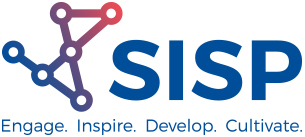An algorithm is a mathematical method of solving problems both big and small. Though computers run algorithms constantly, humans can also solve problems with algorithms. David J. Malan explains how algorithms can be used in seemingly simple situations and also complex ones.
Students Learn About
- algorithms
- calculating distance
- trigonometry
- circle geometry
- input/output systems
Students Learn To
- solve practical logic problems with applications to mechatronics using algorithmic functions
- make predictions involving time, distance, speed, velocity
- use trigonometry to determine efficient pathways
- use circle geometry to understand movement in order to solve problems
Downloads

Circle Geometry - A guide for Teachers Years 9 - 10
Circle Geometry - A guide for Teachers Years 9 - 10 was produced as part of the improving mathematics education in schools (TIMES) project. This 46 page document is full of excellent resources to support students knowledge of Circle Geometry.
Videos
Data science is an interdisciplinary field about processes and systems to extract knowledge or insights from data. Knowledge areas Data science include statistics, computer science, design and social sciences. In this lecture Martin Vonderheiden provides an introduction to Algorithms.
DataScienceInsight.com was launched by Paul Fielding, John Murphy and Martin Vonderheiden with to goal to teach Data Science. to Non-Data Scientists. Learn to clean up messy data, uncover insights, make predictions using data science tools, and clearly communicate critical findings. Understand the concepts and tools you'll need throughout the entire data science pipeline, from asking the right kinds of questions to making inferences and publishing results.
An algorithm is a mathematical method of solving problems both big and small. Though computers run algorithms constantly, humans can also solve problems with algorithms. David J. Malan explains how algorithms can be used in seemingly simple situations and also complex ones.
An algorithm is set of step by step instructions that is used to do something.
Dive a little deeper into the actual components that allow a computer to input, store, process, and output information.

